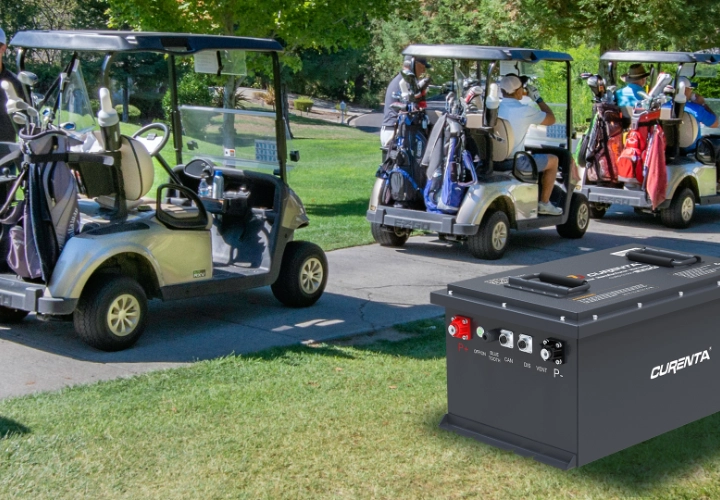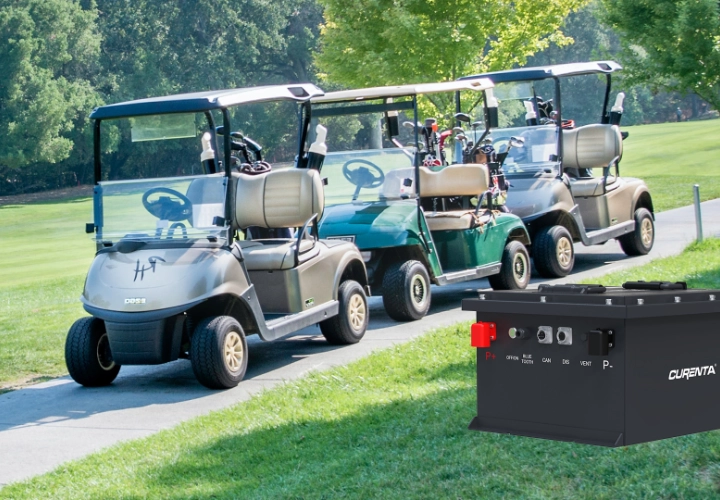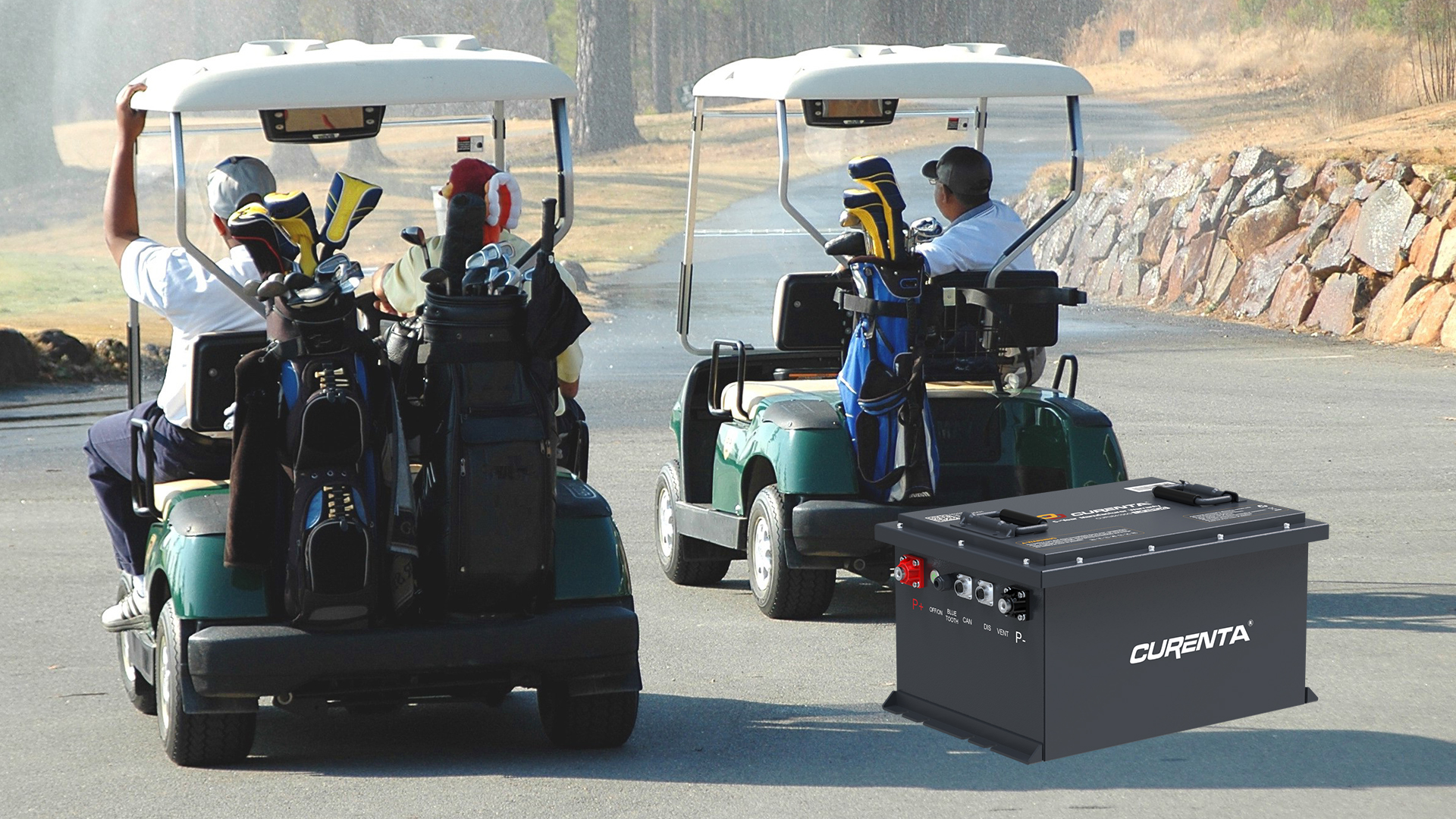Learn More >
Is a 36V Lithium Marine Battery the Best Upgrade for Your Boat’s Power System?
If you’re running a modern trolling motor, electric propulsion, or marine electronics system, you’ve probably heard whispers—or bold claims—about switching to a 36V lithium marine battery. But is this upgrade really worth it? In this article, Curenta Battery walks you through everything you need to know—from the technology and benefits to installation, common pitfalls, and practical advice—so you can decide whether a 36V lithium marine battery is the right move for your boat setup.
Introduction: Why 36V, and Why Lithium?
The Appeal of 36V in Marine Use
Many electric trolling motors, bow-mount systems, or auxiliary drive systems require higher voltages to deliver strong thrust and efficiency. A 36V system often hits a “sweet spot” between power and manageability:
Stronger torque and efficiency: Higher voltage systems reduce current draw for the same power output, meaning smaller cables and less heat loss.
Modular battery configurations: You can build a 36V system by combining three 12V modules in series, or choose an integrated 36V battery design.
By choosing a 36V platform, you're effectively enabling a higher-performance marine drive system while keeping wiring and balance considerations manageable.
Why Lithium (LiFePO₄ and Related Chemistries)?
“Lithium marine battery” is shorthand for a high-performance, rechargeable battery often employing lithium iron phosphate (LiFePO₄ or LFP) chemistry or closely related lithium-ion variants. These offer several key advantages over traditional lead-acid (AGM, flooded) or gel batteries:
Higher energy density / lighter weight
Lithium packs can deliver significantly more watt-hours per kilogram than lead-acid equivalents, making 36V lithium marine battery systems much lighter.Deeper usable discharge (Depth of Discharge, DoD)
Lithium systems commonly allow 80%–100% usable capacity without damage, whereas many lead-acid systems recommend staying above 50% to avoid shortening battery life.High cycle life
Many lithium marine batteries promise thousands of cycles (2,000–5,000+ typical) before significant capacity fade, far exceeding many lead-acid designs.Low self-discharge and virtually no maintenance
A 36V lithium marine battery can sit for weeks or months with minimal loss, and you don’t have to top off electrolyte levels or equalize charges.Stable voltage curve
Lithium systems maintain a relatively flat voltage output through their discharge curve, so your electronics or motor operate closer to optimal voltage throughout the run.
Because of these traits, a 36V lithium marine battery is increasingly a top choice for anglers, cruising craft, and electric boats.
What to Look for in a 36V Lithium Marine Battery
Before you leap into purchasing, here are the critical specifications and design features you should examine.
Capacity & Amp-Hour Rating
Capacity, usually expressed in amp-hours (Ah), tells you how much charge the battery holds. For a 36V system:
A 50 Ah 36V battery offers 36V × 50Ah = 1,800 Wh (1.8 kWh) nominal energy.
A 100 Ah unit doubles that to 3,600 Wh (3.6 kWh).
The right capacity will depend on your motor draw, electronics load, and desired runtime.
Continuous and Peak Discharge Current
Check how many amps the battery can deliver continuously, as well as its peak or surge rating. If your motor draws 60 A continuously or surges higher, the battery must support that. Some manufacturers specify 1C continuous and 2–3C peak ratings; for instance, a 50 Ah battery might support 50 A continuous and 100–150 A bursts.
Battery Management System (BMS) & Protection Features
A robust BMS is crucial for a 36V lithium marine battery. The BMS should include:
Over-voltage protection (during charging)
Under-voltage cut-off (to prevent deep discharge damage)
Over-current / short-circuit protection
Temperature monitoring (especially for marine environments)
Cell balancing (to maintain even cell voltages in series packs)
Waterproofing / Sealing & Marine Durability
A marine battery must contend with moisture, salt spray, and vibration. Look for ratings like IP65, IP67, or similar sealing standards. The enclosure should protect against corrosion, ingress, and mechanical stresses.
Weight & Size
One of the key selling points of a 36V lithium marine battery is reduced weight. Opt for compact, dense designs that don’t compromise on strength. The new design should fit your battery compartment or battery box footprint.
Certifications & Warranty
Ensure your battery is certified (UL, CE, IEC, etc.) for marine or stationary applications. Also check warranty terms—some lithium marine batteries offer 5–10 year warranties.
Benefits of Upgrading to a 36V Lithium Marine Battery (With Curenta’s Perspective)
Here’s how Curenta Battery envisions the advantages:
Longer Time on Water
With higher usable capacity and better efficiency, you’ll spend less time worrying about battery drain. A properly sized 36V lithium marine battery can power motors and electronics for extended trips.
Lighter Load = Better Performance
Replacing heavier lead-acid or AGM strings with a lighter 36V lithium marine battery reduces weight aft, improves trim, and enhances fuel efficiency if you run a gas engine in parallel.
Lower Total Cost of Ownership
While the sticker price might be higher, the long cycle life and reduced need for replacement translate into lower cost per kWh over the life of the battery.
Simplified System Architecture
Instead of juggling three or more 12V batteries in series (balancing, maintenance, wiring challenges), a dedicated 36V lithium marine battery gives you a more integrated solution.
Environmental and Safety Gains
Lithium systems tend to be safer (especially LiFePO₄ chemistry) and generate fewer toxic materials or fumes. They’re better for the planet and safer aboard your vessel.
Real-World Examples & Comparisons
To ground this discussion, let’s look at some real-world 36V lithium marine battery models and applications.
RELiON RB36V40
RELiON’s RB36V40 is a 36V lithium marine battery optimized for trolling motor use. Its design emphasizes:
A parallel configuration (rather than series) for simpler installation and better capacity scaling
IP67 waterproof rating and marine-optimized enclosure
Lightweight construction and no maintenance needs
Strong performance under partial state-of-charge conditions (common in marine use)
Such a battery is a good representation of what many boating and fishing enthusiasts look for in a 36V lithium marine battery.
MillerTech 36V 60Ah Marine Trolling Battery (Model 3660-BT)
MillerTech offers a 36V 60 Ah marine trolling battery, complete with Bluetooth monitoring, low-temperature charging protection, and UL certification.
Its specs:
Capacity: 60 Ah
Voltage: 36V nominal (peak up to ~43.2V)
Weight: ~41 lbs
Warranty: 10 years
This is a great example of how modern 36V lithium marine battery designs are integrating smart features and long warranties.
Comparisons with Lead-Acid 12V Triples or Quadruples
Many boaters substitute three 12V lead-acid batteries (wired in series) to approximate a 36V system. But:
You lose usable capacity due to deeper discharge limits (you might only use 50% of lead-acid capacity safely).
Series wiring complexity, potential cell mismatch, and balancing issues come into play.
Weight is much higher, and failure of one battery affects the whole string.
By contrast, a well-engineered 36V lithium marine battery addresses many of these issues in a packaged, optimized solution.
Installation and Wiring Considerations for 36V Lithium Marine Battery Systems
Series vs. Parallel Configurations
There are two main ways to reach 36V in lithium battery systems:
Three 12V cells/modules in series
This is flexible but demands identical capacity and matched modules
Requires careful balancing and strong BMS support
Single, purpose-built 36V lithium marine battery
All the cells are internally balanced and managed
Simpler installation, less risk of mismatches
Curenta Battery strongly recommends dedicated 36V lithium marine battery solutions for most boaters to simplify installation and maintenance.
Cable Sizing & Lugs
Even though the current is reduced at higher voltage, proper cable sizing is critical. Undersized wires will lead to voltage losses, overheating, and inefficiency. Use marine-grade tinned copper lugs and heat-shrink insulation.
Fuse, Breaker & Safety Devices
Always include a properly rated marine-grade fuse or circuit breaker between the battery and load. The fuse should be close to the positive terminal of the battery to protect cabling.
Balancing & BMS Taps Access
If using modular 12V cells in series, ensure you have access to cell taps or balancing points so the BMS can monitor and equalize them. If using an integrated 36V lithium marine battery, verify BMS access or monitoring ability (e.g. via Bluetooth or CAN/NMEA interface).
Ventilation & Mounting
While lithium cells do not “vent” gases like lead-acid, heat dissipation is still needed. Provide airflow, avoid enclosures that trap heat, and mount the battery securely with marine-grade hardware and vibration isolation.
Charging Considerations
Charging a 36V lithium marine battery requires a charger or charging system designed for lithium voltage profiles (CCA, CV, cut-offs). Traditional lead-acid chargers may not correctly charge lithium packs and could even damage them.
Many systems use DC-DC converters, smart chargers, or lithium-tuned alternators to manage charging.
Performance, Runtime, and Calculations
To estimate how long a 36V lithium marine battery will power your system, follow these steps.
Step 1: Estimate Total Load (Watts)
Add up the power draw of your motor and auxiliary electronics:
Trolling / drive motor: e.g. 800W
Electronics, lighting, instruments: 50–200W
Pumps, bilge, accessories: 20–100W
→ Total load example: 1,100 W
Step 2: Convert to Amps (at 36V)
[ I = \frac{P}{V} ]
At 1,100 W / 36 V = ~30.6 A draw.
Step 3: Determine Battery Capacity Use
If your 36V lithium marine battery is 100 Ah:
Nominal energy = 36 V × 100 Ah = 3,600 Wh
If you use 80% depth-of-discharge safely: usable = 0.8 × 3,600 = 2,880 Wh
Runtime = 2,880 Wh / 1,100 W = ~2.62 hours
Smaller units (e.g. 60 Ah) give proportionally less runtime.
Step 4: Factor Inefficiencies & Reserve Buffer
In practice, efficiency losses (heat, wiring, conversion) might take 5–10%. Also, leaving a buffer (e.g. avoiding full drain) helps extend battery life. So in real use, maybe expect 2.3–2.5 hours out of a 100 Ah pack under that load.
Parallel Configurations (Optional)
If capacity is insufficient, you can place multiple identical 36V lithium marine battery packs in parallel to increase ampere-hours. But mixing different brands or capacities is discouraged—always use matched units.
Common Pitfalls & How to Avoid Them
Using Incompatible Chargers
Don’t use a standard lead-acid charger unless it supports lithium charge profiles. Use a proper lithium (LiFePO₄) charger tuned for 36V systems.
Balancing Mismatch in Series Setups
If you build 36V from modules, unbalanced cells can degrade battery life. Ensure modules are same model, age, and capacity, and use a BMS with balancing.
Over-Discharging Repeatedly
While lithium systems tolerate deep discharge better than lead-acid, repeated over-discharge below safe cut-off (e.g., below 30V) can degrade cells prematurely.
Poor Cable or Fuse Sizing
Undersized cables or fuses blow ups unexpectedly or create voltage drops—plan for proper wire gauge.
Lack of Ventilation & Heat Management
Heat is enemy of batteries. Avoid confined boxes, ensure airflow, and minimize heat exposure.
Ignoring Warranty & Certification
Using uncertified or generic lithium packs with no marine rating may compromise safety and void warranty claims. Always verify marine certifications.
Case Study: Upgrading a Trolling Motor with a 36V Lithium Marine Battery
Let’s walk through a hypothetical upgrade:
Before: Three 12V AGM batteries in series, 120 Ah each (at 50% usable depth), run time ~1.5 hours.
After: One dedicated 36V 100 Ah lithium pack from Curenta Battery.
Weight savings: many tens of pounds lighter
Runtime: ~2.5 hours at similar draw
Simpler wiring and improved reliability
No maintenance, better longevity
Over the lifespan, this upgrade pays for itself in fewer replacements, better efficiency, and enhanced boating enjoyment.
Why Trust Curenta Battery’s 36V Lithium Marine Battery Solutions?
At Curenta Battery, we emphasize reliability, performance, and marine-grade design in our 36V lithium marine battery products. Here’s why customers choose us:
Purpose-built packs (not repackaged consumer cells)
Advanced BMS designed for marine conditions
IP-rated enclosures, corrosion-resistant hardware, vibration resistance
Support for NMEA / CAN / Bluetooth telemetry for system integration
Long warranties to back our product confidence
Expert consultation on sizing, wiring, and installation
We believe a 36V lithium marine battery built by Curenta Battery should deliver power, durability, and peace of mind across every voyage.
Frequently Asked Questions (FAQ)
Q: Can I retrofit my existing 12V gear or battery boxes to use a 36V lithium marine battery?
A: Possibly. But you’ll need appropriate wiring, mounting, charger compatibility, and space considerations. In many cases, switching to compact curved 36V modules or new battery boxes makes sense.
Q: Can I mix lithium and lead-acid batteries in a system?
A: No. Different chemistries, voltages, internal resistance, and charging profiles make mixing unsafe and unreliable. Always use matched lithium units for consistency.
Q: How cold can a 36V lithium marine battery operate?
A: Many lithium batteries incorporate low-temperature charging cut-offs to protect cells. Discharging in colder conditions is often allowed down to –4 °F or lower depending on design. Always check manufacturer specs.
Q: Do I need to maintain a 36V lithium marine battery?
A: Maintenance is minimal: occasional balancing checks, ensuring clean terminals, and avoiding extreme temperature abuse.
Q: What’s the lifespan of a good 36V lithium marine battery?
A: Many packs promise 3,000–5,000 cycles or more under ideal conditions. That often means 10+ years of service with good care.
Final Thoughts: Is a 36V Lithium Marine Battery Right for You?
If your boating setup demands sustained power, you value weight savings, long life, and simplified system architecture, a 36V lithium marine battery from Curenta Battery could be a game-changer. It streamlines wiring, enhances performance, and delivers cost-saving durability.
However, it’s important to do the math: check your load, runtime goals, installation constraints, and budget. When selected and installed correctly, a 36V lithium marine battery won’t just replace your old system—it will elevate your boating experience.
If you want help sizing or selecting a Curenta Battery 36V lithium marine battery for your setup, feel free to reach out—I’m happy to assist further.

 English
English German
German Czech
Czech French
French Italian
Italian Hungarian
Hungarian Russian
Russian Japanese
Japanese Korean
Korean Arabic
Arabic Spanish
Spanish Portuguese
Portuguese Danish
Danish


 WhatsApp
WhatsApp